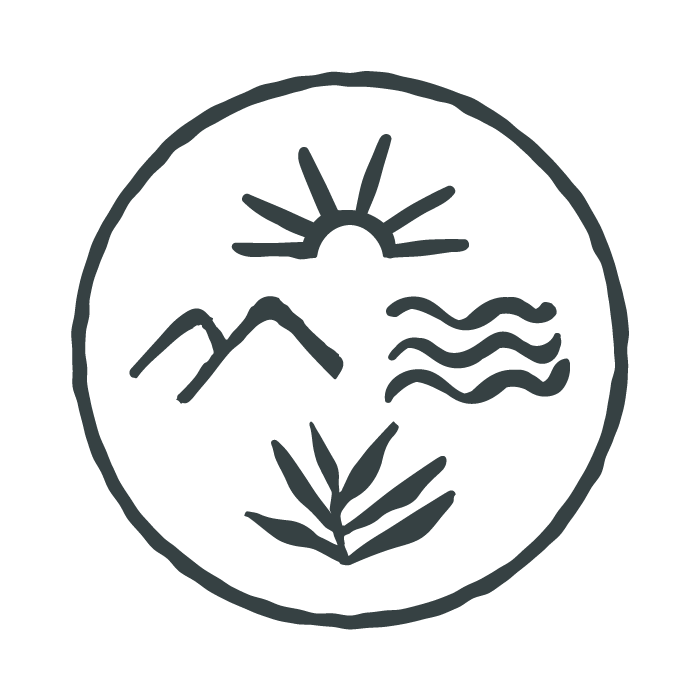
Tenerife, a destination which I have to admit wasn’t at the top of my bucket list. It is the largest of Spain’s Canary Islands and one of the most popular holiday destinations in Europe. I had wrongly cast it aside as a resort covered tourist trap, but the reality is that Tenerife is an island of two halves. The north is quiet, authentic and rich with beautiful landscapes. The south is a sunny escape where you can relax in a luxury resort. There is something for everyone.
Tenerife itself is hugely varied in terms of landscapes, from the desert-like and dry south through to the lush forests of the north. The island is of volcanic origin so is also home to dramatic lunar landscapes, a rugged coastline and the highest mountain in Spain – the volcano Teide, which is surrounded by lava fields. In one hour you can drive from a sandy beach to a sub-alpine mountain. It is a seriously incredible place to explore, especially by foot. Which is why this Tenerife travel guide is focused around hiking, but also includes the best swim spots, beaches and everything in between. Let’s hop in!
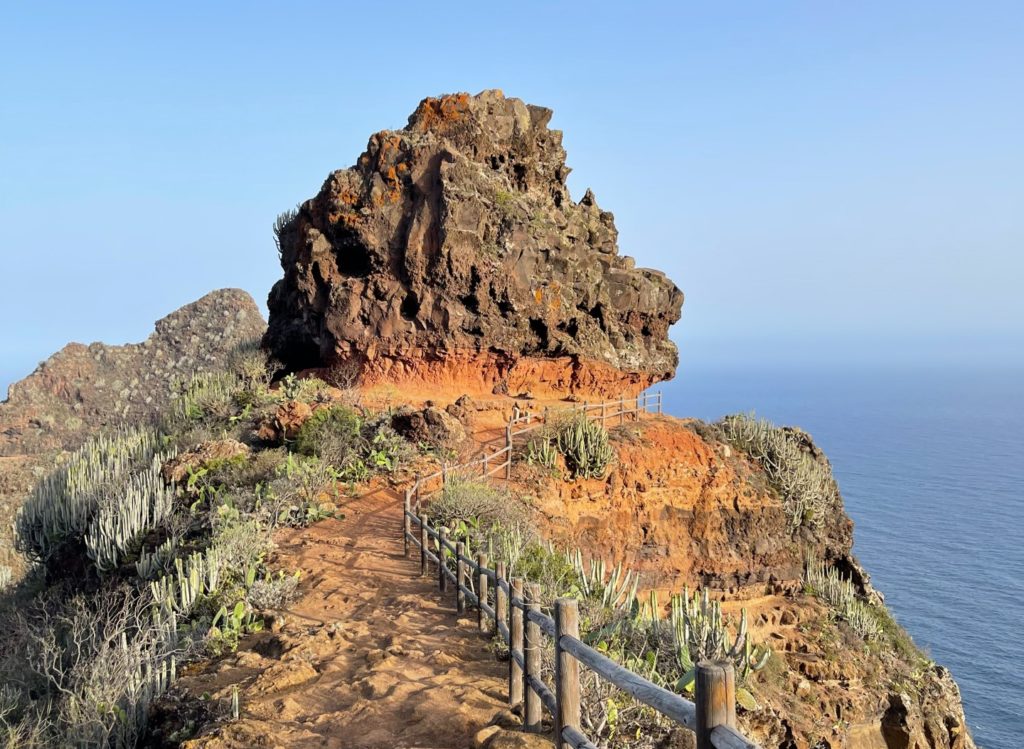
There are direct flights to Tenerife from most UK airports and it is around a four hour journey. Once on the ground I recommend renting a car as you will need one to access the hiking regions of the island.
You can visit Tenerife on a budget or splash the cash on luxury hotels. In terms of food, prices are much lower in the North of the island and get progressively more expensive as you move South.
We went for 10 days and could have easily extended our trip to a total of two weeks, there is so much to explore. That being said, you could spend a long weekend in one region (such as Anaga) or a week covering two.
Tenerife is a year round destination. Hiking is most popular during the months of October and May, but we went in August and loved it. The weather between November and April is a little more unpredictable but you can get lucky. One thing to be aware of is it you go in summer it is best to start your hikes at sunrise to avoid the heat of the day. It gets scorching!
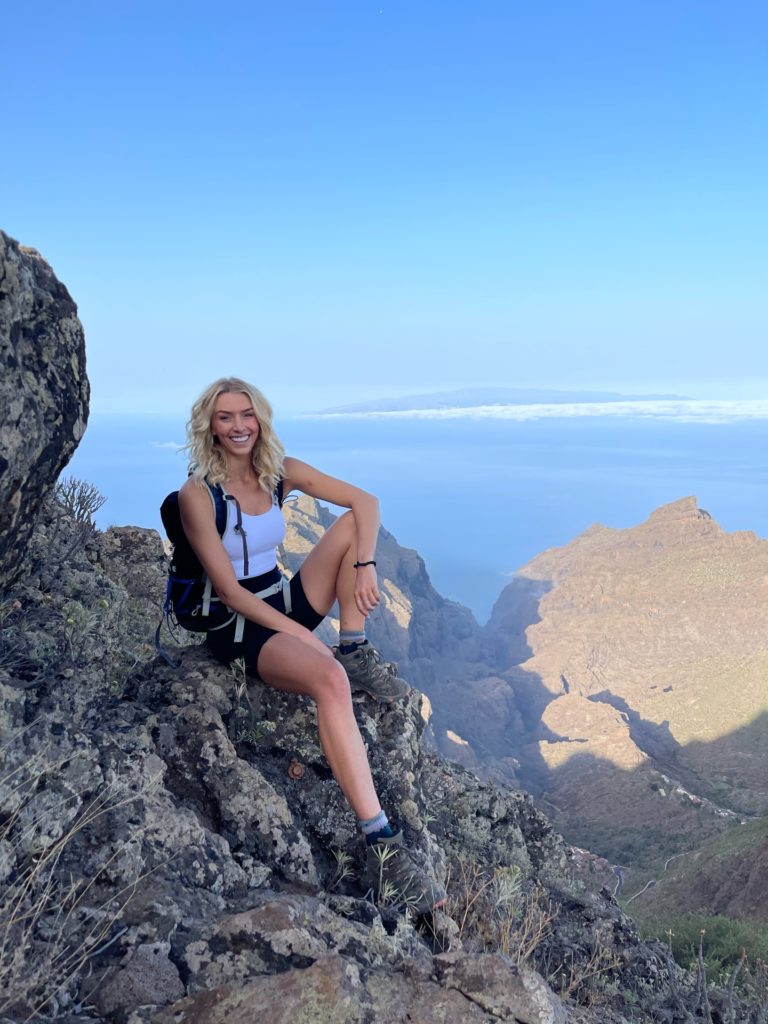
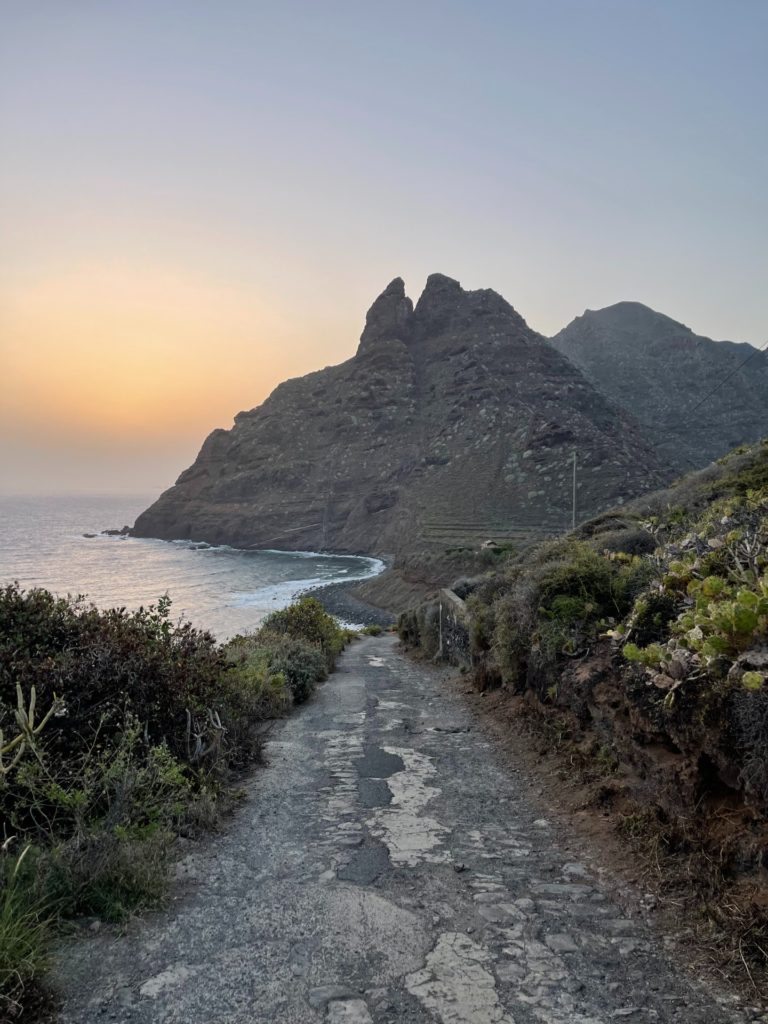
Hiking Book: The Tenerife Rother Walking Guide is an incredible resource detailing 80 walks across the island, categorised by region and difficulty.
Valuables: For your own safety, do not leave valuables in your vehicle. I recommend removing rental car stickers from your vehicle if you can to make it less obvious you’re a tourist.
Be Early: Parking can be limited and beautiful locations can be understandably popular. So be sure to arrive to the trailheads early in the morning to ensure you get a parking spot.
Digital Maps: I recommend downloading and using AllTrails, saving the route maps offline so you can use them when you don’t have signal. Another offline maps option is Maps.Me.
The Microclimates: Tenerife is renowned for its microclimates. It can be blue skies in one village and torrential rain in another, so prepare for all eventualities! The north is notoriously unpredictable. I recommend using the app Windy to an insight into localised weather forecasts.
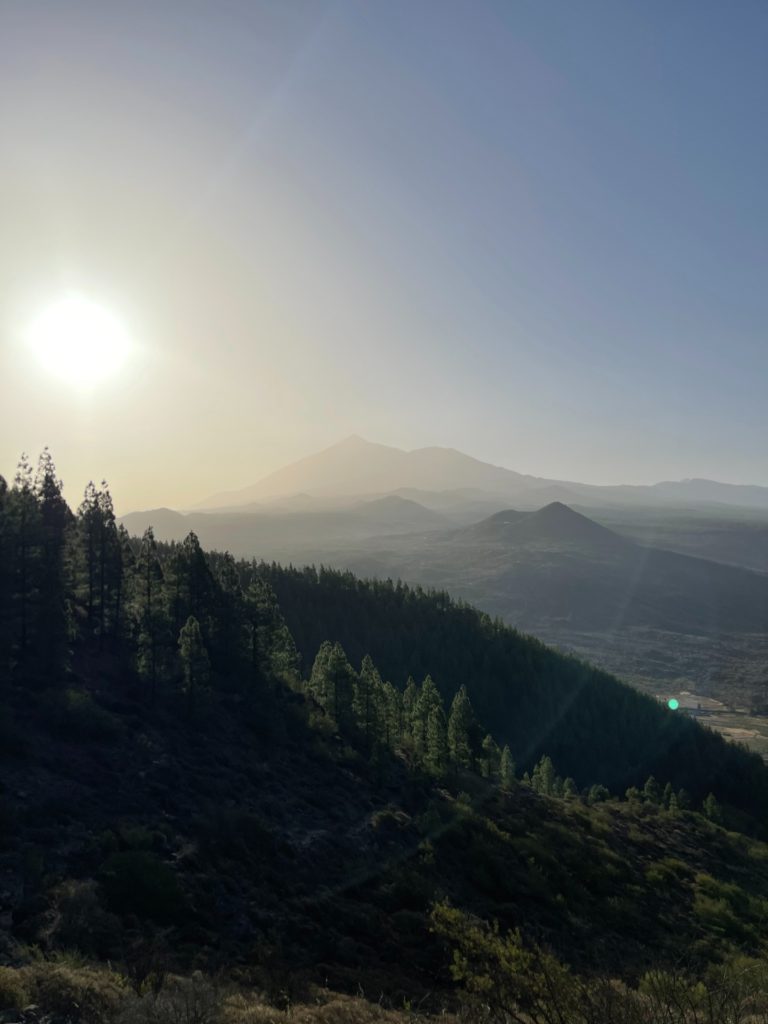
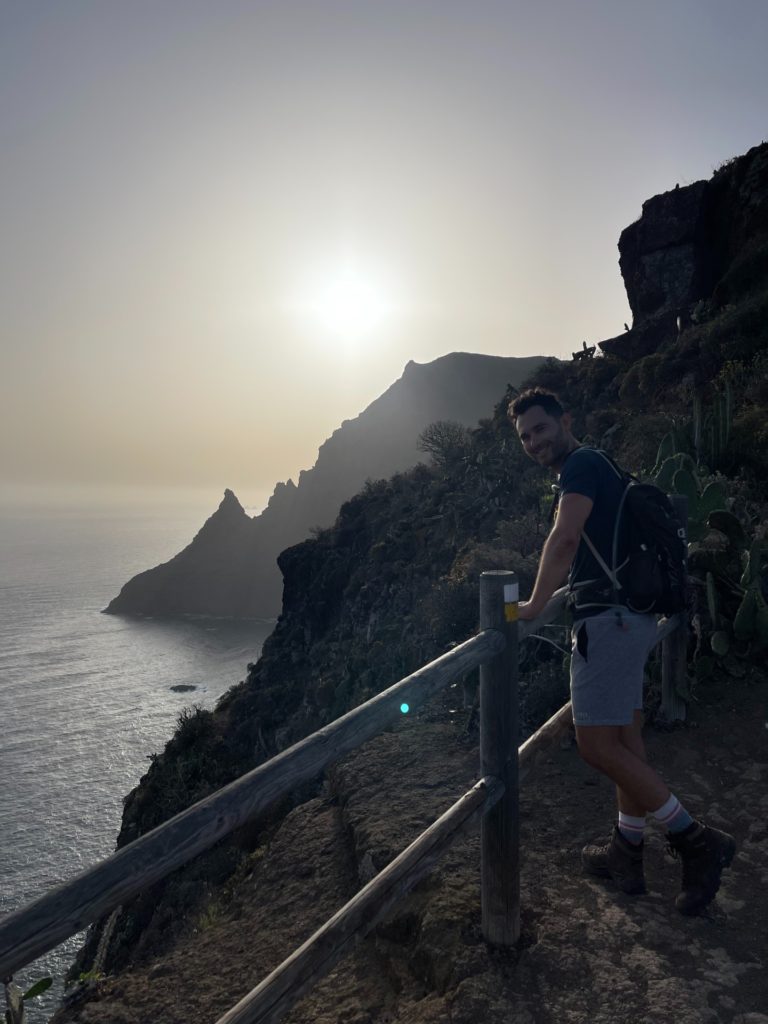
The three key areas of Tenerife that we explored were:

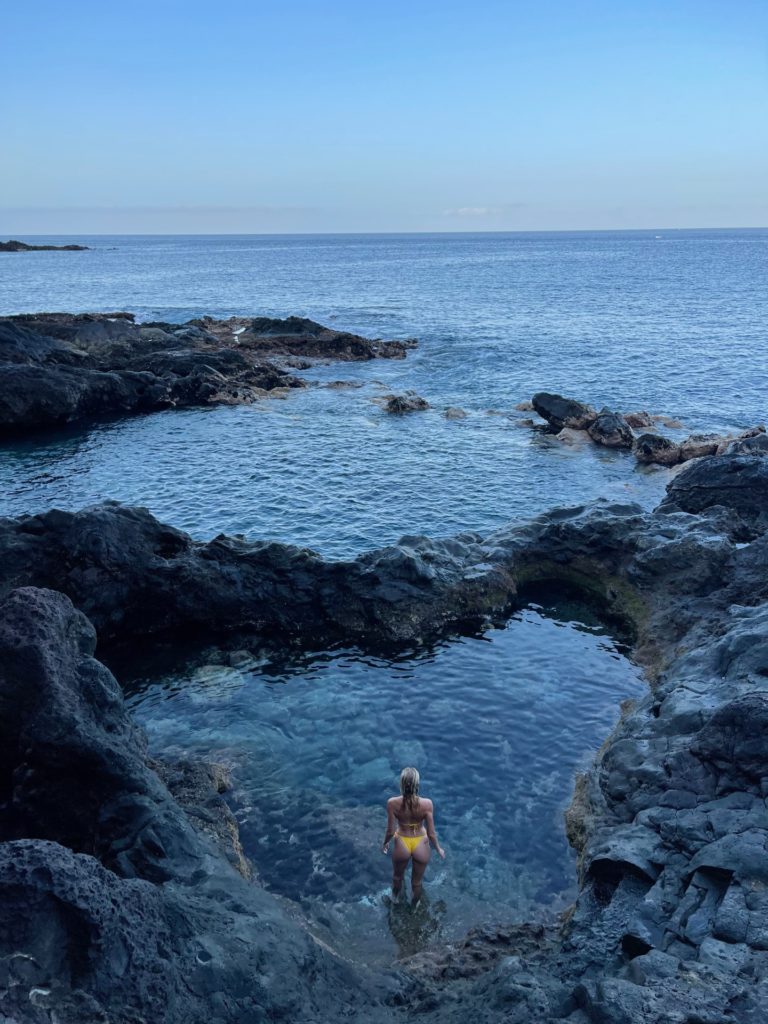
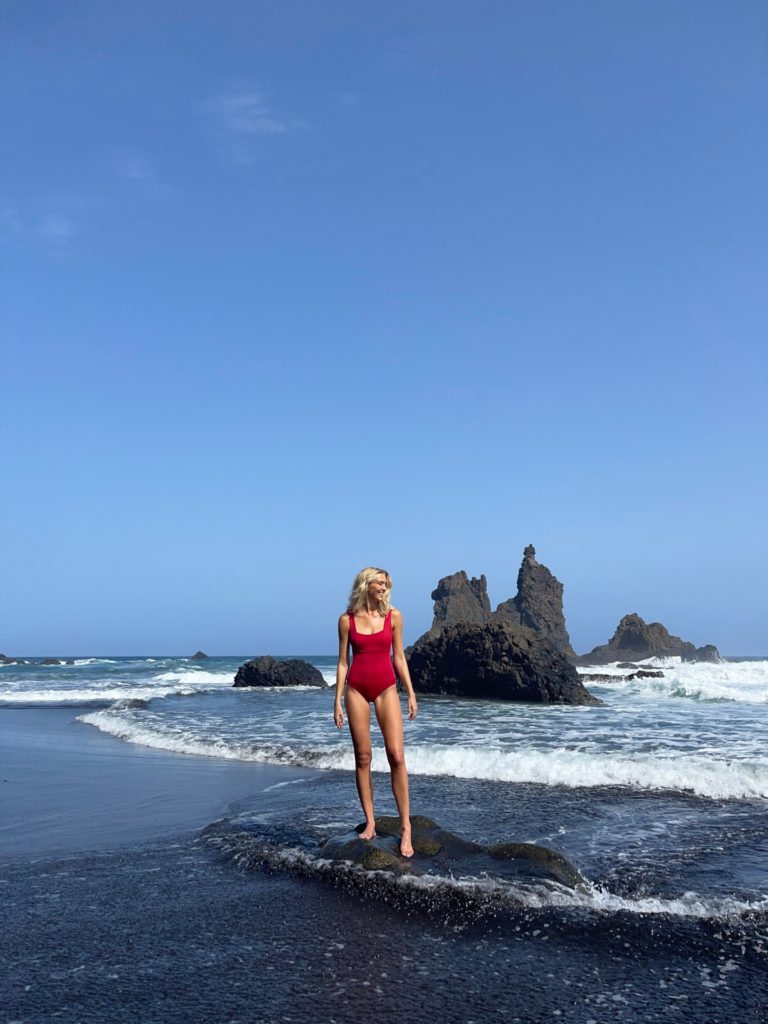
The coastline of Tenerife is covered in stunning pools carved out of black volcanic rock. They are popular spots to go for a swim and when you visit you will like be surrounded by locals, which only adds to the atmosphere. Here are some of our favourites:
There are more volcanic pools than you can shake a stick at along the coastline, I recommend just typing in “piscina natural” to google maps and seeing what you come across on your adventures!
There are numerous beautiful beaches in Tenerife but the one which takes the cake is definitely Benijo. Not only because the beach itself is stunning, it’s covered in volcanic rock formations and has glittering black sand, but because the drive down there is the most beautiful one on the island. The road winds through the Anaga mountains and weaves along the rugged coastline, giving panoramic views at every turn. Go at sunrise for the most incredible experience.
The rugged Tenerife coastline looks incredible from the water, so why not take a boat tour from Los Gigantes. You will get phenomenal views of the Teno mountains and can even find secret beaches. This region is also known for whale watching and dolphin spotting, with dedicated boat trips for this available. Los Gigantes is also an incredible spot to watch sunset as the evening light hits the mountains.
The North of Tenerife has an abundance of quaint historic towns which you can wander through, they are well worth a visit if you pass by. Our favourites included La Laguna, Garachico and La Orotava.
There are numerous adventure activity companies in Tenerife. One particles popular activity is paragliding, but you can also drive dirt buggies, kayak around the coastline, surf the waves or even go scuba diving!
La Gomera is the neighbouring island to Tenerife, easily accessed by a ferry ride. There are numerous day trips you can take to get a taste of the island, but if you have more time it is definitely worth spending a couple of nights there. It is known for its beautiful hiking trails, especially in the Garajonay National Park.
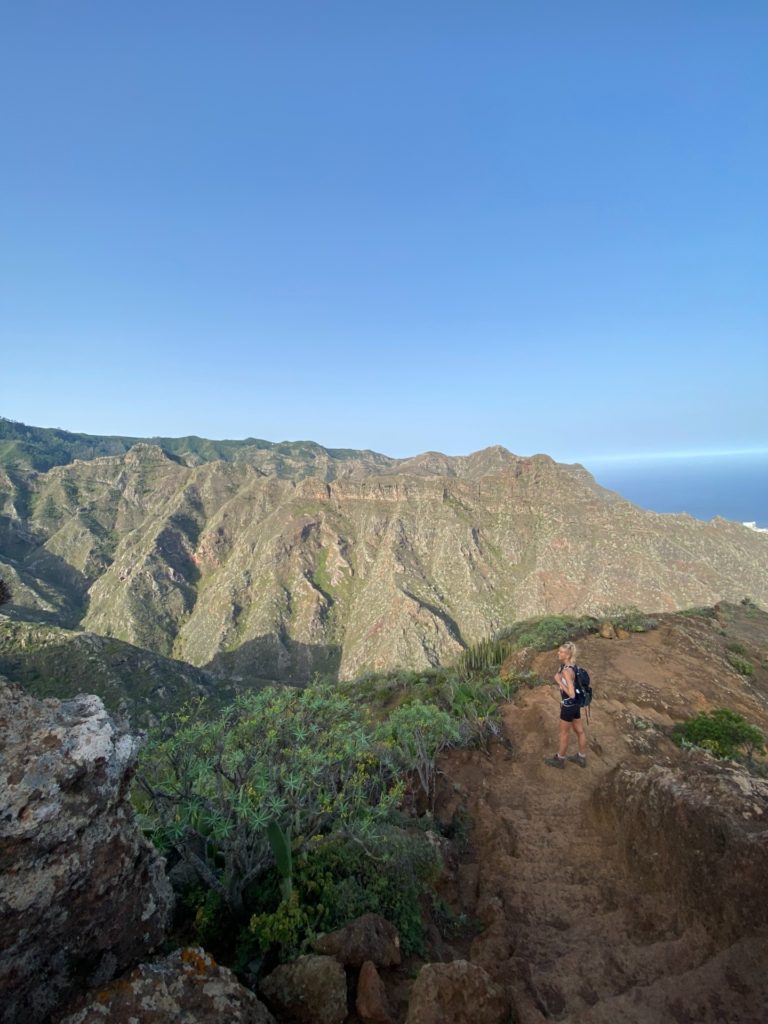
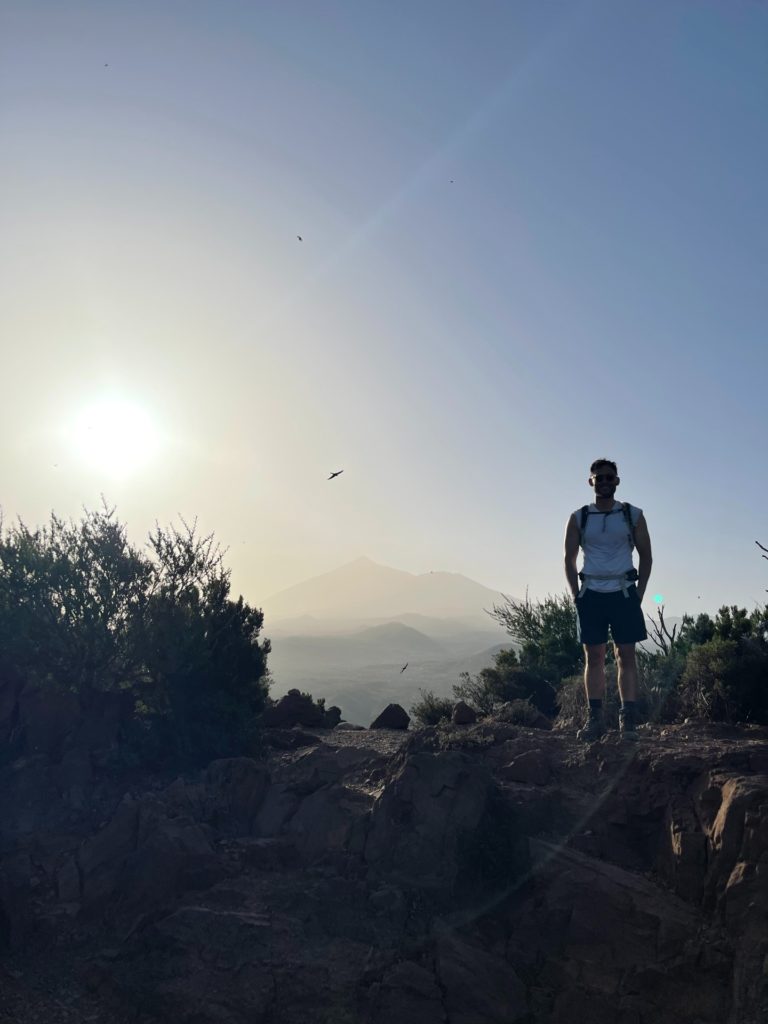
If there is one thing you do on Tenerife, go hiking! It is heaven for walkers with an abundance of routes for all abilities and the trails being well marked and maintained. I have categorised the hikes into the three main regions we explored; Anaga, Teno and Teide.
The Anaga massif in the North East of Tenerife is a UNESCO Biosphere Reserve known for its lush green mountains, deep gorges and a dramatic coastline. The best hikes are typically in the northern slopes, but there are walks throughout the whole region. Our favourite lunch spot in Anaga was Casa Santiago which has incredible views and delicious food.
Distance: 15.1km
Elevation Gain: 1166m
Difficulty: Hard
Route: Click here.
This dramatic and seriously challenging hike in the most remote parts of Tenerife offers some of the best views of the island, but only take it on if the weather is clear, the ground is dry and you’re feeling energised and confident.
Distance: 5km
Elevation Gain: 473m
Difficulty: Moderate
Route: Click here.
A short but rewarding hike with panoramic views. I recommend doing this hike in a clockwise direction, heading along the rugged coastline first before taking on the tough climb behind El Draguillo and enjoying incredible views on your descent.
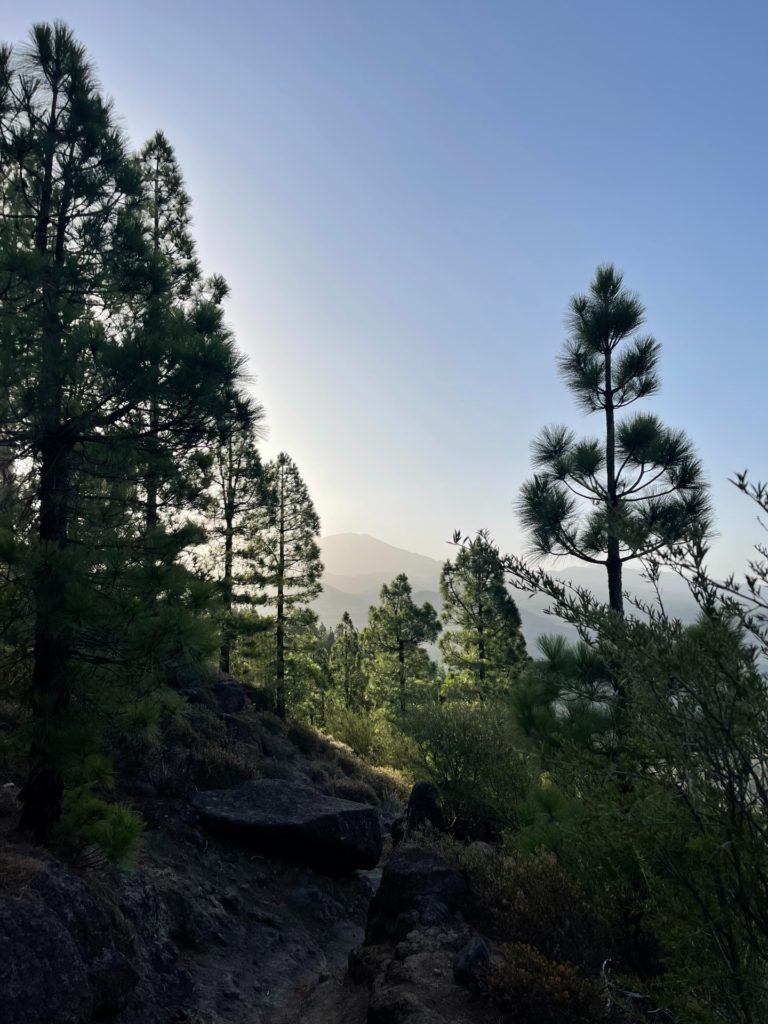
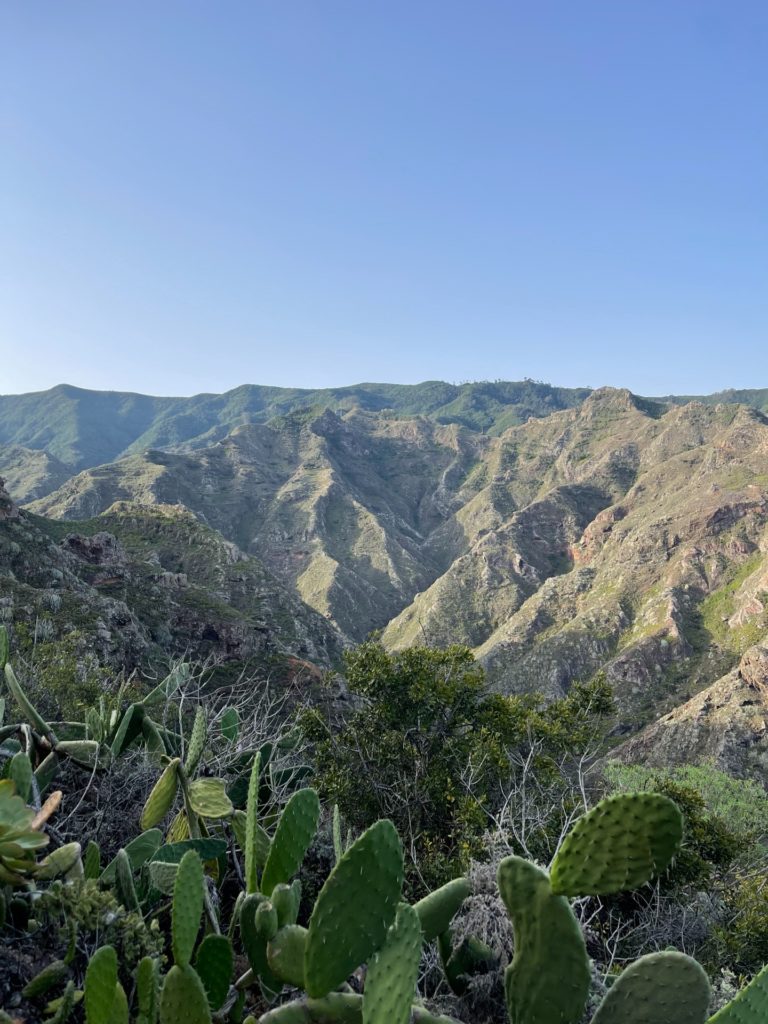
Distance: 9km
Elevation Gain: 627m
Difficulty: Hard
Route: Click here.
One of the most beautiful hikes in the region, this out and back route takes you up to the cave village of Chinamada through a gorgeous valley with endless views. There is a cafe at the top where you can grab a drink and refuel.
Distance: 12km
Elevation Gain: 695m
Difficulty: Hard
Route: Click here.
A circular route with a little bit of everything: tree covered mountains, rugged coastlines, quiet valleys and a wild rocky beach. The coastal section is especially stunning. Look out for the hidden swim spots in the valley as you hike up from Playa de Tamadite to Afur.
Distance: 12.7km
Elevation Gain: 809m
Difficulty: Hard
Route: Click here.
A diverse and challenging hike through the Anaga mountains with stunning views. The midpoint is Chinamada, the popular hamlet known for its cave dwellings.
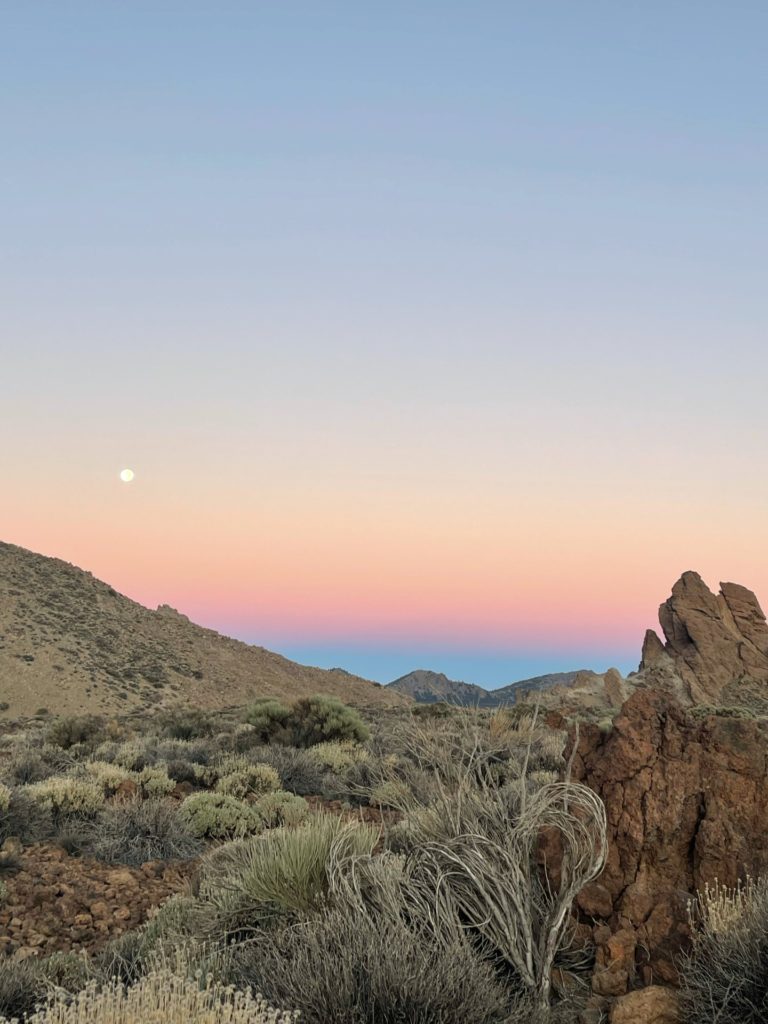
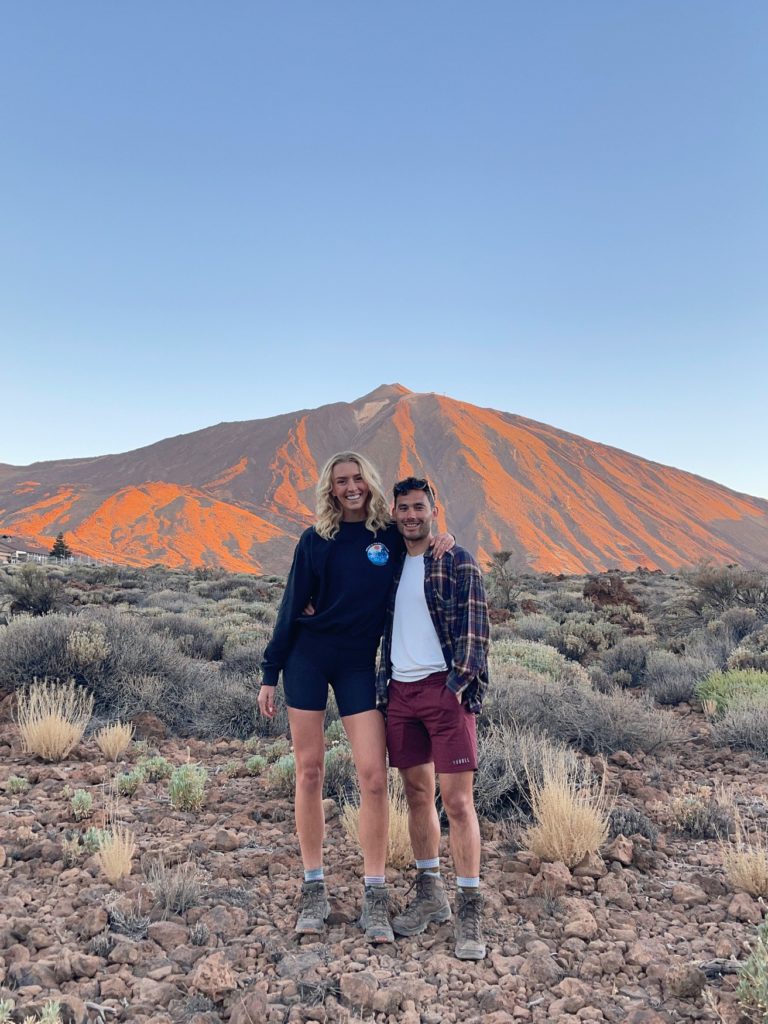
The Teno Mountains in the North West of Tenerife boast dramatic landscapes, quaint villages and deep gorges. They are also home to Los Gigantes, a steep coastline which plunges almost vertically into the ocean.
Distance: 8.4km
Elevation Gain: 364m
Difficulty: Moderate
Route: Click here.
If there is one hike you do in the Teno Mountains, make it this one. The trail gives phenomenal views over the region and finishes off in Masca, where you can catch the local bus back to your start point (check the timetables before you go as services are limited). I recommend extending the trail to visit Risco Verde.
Distance: 8.5km (out and back)
Elevation Gain: 800m
Difficulty: Hard
Route: Click here.
A gorgeous hike through the Masca gorge to Playa de Masca. This is perhaps the most popular hike in the Teno mountains and for that reason the local council control how many people can do it per day. You can book in here. You can either do the trail one way (all downhill) and catch a boat from the beach or hike back up out of the gorge (which is strenuous).
Distance: 5.5km
Elevation Gain: 474m
Difficulty: Moderate.
Route: Click here.
A short but steep ascent leads to incredible views over the village, mountains and Los Gigantes. A beautiful hike for if you’re short on time or don’t want to take on a longer route.
Distance: 16.6km
Elevation Gain: 855m
Difficulty: Hard
Route: Click here.
Cars are restricted in Punta de Teno so a great way to access the area and see the famous lighthouse is on foot. This long and challenging hike from Teno Alto gives gorgeous views along the route.
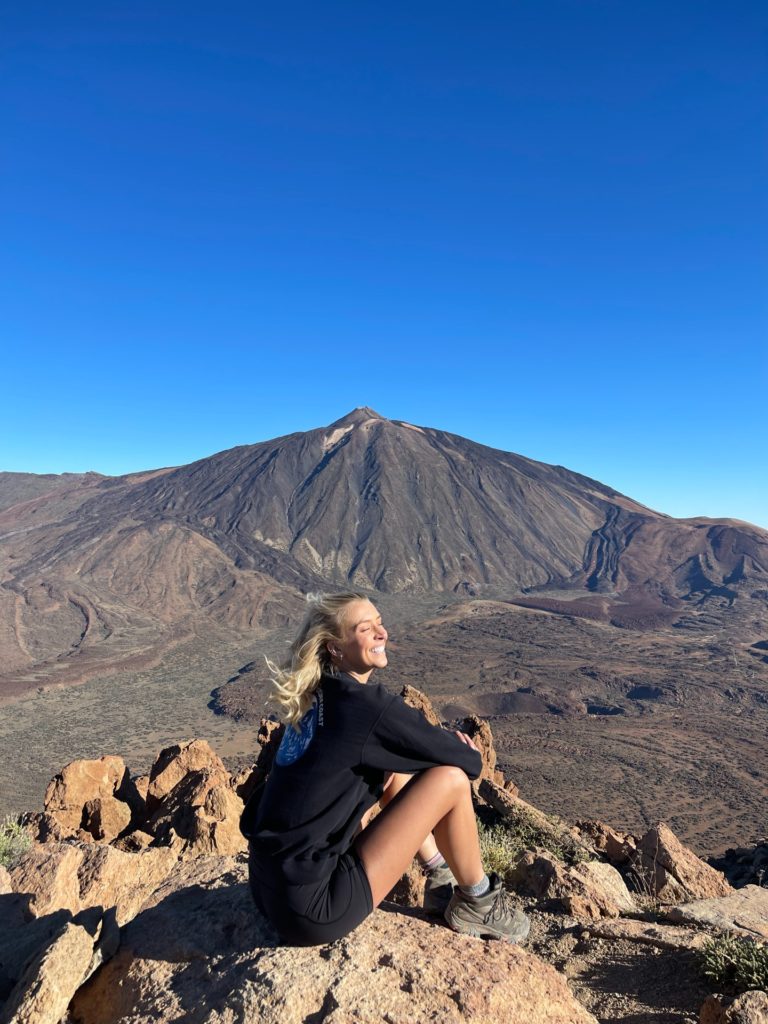
You can’t visit Tenerife without stopping by at Teide National Park, home to the highest mountain in Spain, Teide, which sits at 3718m. You need a permit to hike up Teide itself, but there are some incredible hikes in the surrounding area which give phenomenal views of the region. It is unlike anything I have seen before, covered in lava flows, dramatic rock formations and lunar landscapes. It couldn’t be more different to the rest of the island!
Heads up: due to the elevation in Teide National Park, the temperature can be much lower than the rest of the island. Take layers!
Distance: 10.1km
Elevation Gain: 771m
Difficulty: Hard
Route: Click here.
A steep climb to the top of neighbouring Mount Guajara gives incredible views of Teide, as well as the surrounding area. The route goes through varied landscapes from white lunar rocks and black lava fields through to red crags. From the top you can see multiple neighbouring islands on a clear day.
Distance: 3.4km
Elevation Gain: 200m
Difficulty: Easy
Route: Click here.
A short but impressive walk around the rugged rock formations of Roques de Garcia. This is best enjoyed at sunrise or sunset.
Distance: 5.1km
Elevation Gain: 288m
Difficulty: Moderate.
Route: Click here.
A short but rewarding hike with beautiful views of Teide, the lava fields and neighbouring islands, as well as a walk through a pine forest. It would be an amazing place to watch sunrise or sunset.
If you want to conquer the highest mountain in Spain, then you need a permit which can be pretty tough to get hold of. You can apply in advance via the Parque Nacional Teide reservation website. If you do secure a permit then there are multiple routes up such as this. If you do not secure a permit then you can take a cable car (which you need to book in advance) up to a viewpoint 163m below the summit.
Hopefully this article has equipped you with everything you need to plan an active escape to Tenerife. This often underestimated and overlooked island is the perfect destination for a hiking adventure, so lace up your shoes and go take in its spectacular natural beauty!
Zanna x
Let me slide into your inbox. A monthly newsletter of all the good stuff – latest posts and videos, rants and rambles, recommendations and resources.
Website Designed by Brogan Daisy Digital © Zanna Van Dijk 2025